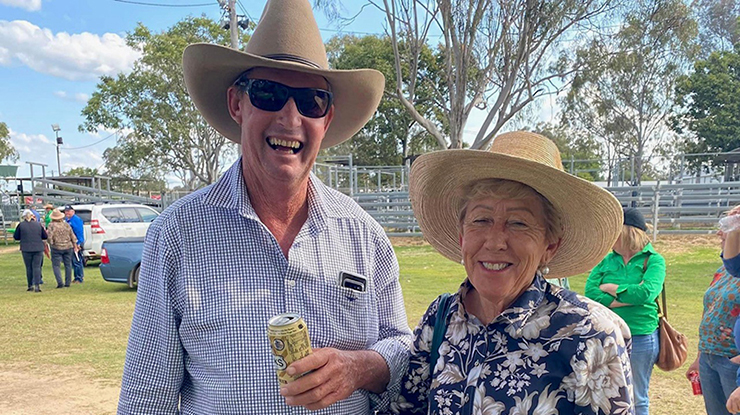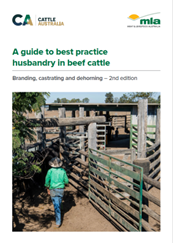 Herb and Sue George
Herb and Sue George
Key points:
- The George family have seen flow-on of benefits from improved wellbeing.
- Calves have bounced back more quickly following dehorning, castration and branding.
- At weaning, calves have been more settled and placid.
Implementing across-the-board pain relief to routine animal husbandry procedures has improved welfare, safety and efficiency on Herb and Sue George's Queensland Channel Country property.
Their Jundah beef breeding operation has stood the test of time under five generations of the family, through their commitment to ongoing learning, innovation and astute responsiveness to shifts in consumer expectations, including those around animal welfare.
Their strategic approach has improved wellbeing at 'Glen Valley', with flow-on benefits including:
- improved staff safety
- time savings at mustering
- better temperament and reduced stress in cattle
- calves bouncing back more quickly following dehorning, castration and branding
- more settled and placid calves at weaning.
Proactive adoption of pain relief
After attending a FutureBeef webinar on pain relief in 2020, Herb and Sue accessed product and dosing information from the FutureBeef website and, with the help of their veterinarian, rolled out pain relief across the board for routine husbandry practices.
"We took the view we wanted to turn off the best product we could," Sue said.
Anticipating a future where pain relief is standard practice in the red meat industry, Herb and Sue wanted to be on the front foot and keep up with consumer sentiment around animal welfare expectations.
"You have to be proactive in running viable, sustainable businesses. If we can do something which improves our management and also the welfare of our animals, then it's a win-win," Sue said.
Calmer calves
Herb and Sue have found the treatment best suited to their operation is the non-steroidal anti-inflammatory drug Metacam®. Its long-lasting (72 hour) effect has made a big impact on how
their calves respond both during and after required husbandry procedures.
"We trialled Metacam® during branding – it required whole practice change, as you put them in the race, inject it and it takes 15 minutes to work," Sue said.
"We were very impressed with how it worked. When Herb castrates the male calves, it seems to physically settle them when they're in the cradle."
Herb and Sue have found using pain relief has a positive impact on the ease of mustering cows and calves after dehorning, castrating and branding. This has saved time as cattle display better mothering and calves are less inclined to lay around the yards and 'sulk'.
"It's cut back about a third of the time taken from mustering them out of the holding paddock and getting them to walk away," Sue said.
"I can't see us not doing it now, it will just become part of our everyday practice. It costs us $6 per head for Metacam® and it's money well spent.
Practice change
Herb and Sue believe the yard adjustments and extra 15 minutes required to wait for pain relief to take effect are time and effort well spent, based on the improvements they've witnessed.
"We were determined to make it work and it's just natural now. We don't seem to notice it takes a little bit longer when we brand the calves," Sue said.
Wide-ranging benefits
Sue and Herb said cattle which experience less stressful husbandry practices are easier to handle both straight after the event and into the future.
This is great news for staff safety as well as the ability of their cattle to bounce back and feed well after handling.
"They seem to remember going up the branding race. If you have a calf or a weaner in the yards that's more manageable, then they're going to go on to feed better and be a more settled animal," Sue said.
"It's got to have a positive flow-on effect throughout their lifetime. Considering their first exposure to humans is drafting and up the branding race, it's got to be a huge positive for our industry."
Find some tips for best practice in Meat & Livestock Australia's recently updated manual, A guide to best husbandry in beef cattle: Branding, castrating and dehorning – 2nd edition, which is linked below.







